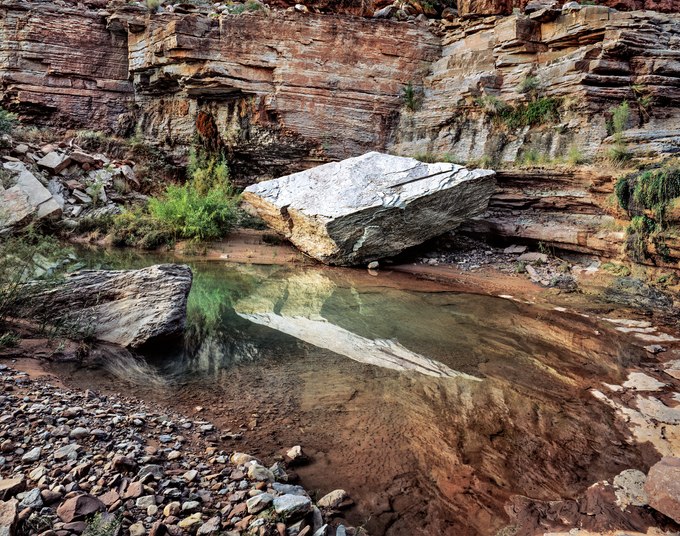A mile upstream from its confluence with southern Utah’s San Juan River, Slickhorn Canyon shelters an alcove teeming with plants and wildlife. Eight-hundred-foot cliffs shade and protect a pool along a creek fed by spring snowmelt and summer monsoon downpours.
Slickhorn’s talus slopes and rockfalls clutter its gulch with boulders, bordered by cottonwoods and junipers. Flat blue-gray rock, a blend of sandstone and limestone, paves the canyon floor in a series of shelves that stair-step down to the river, fed by a meandering stream and interspersed with occasional oases formed in shallow depressions on the shelves. Like its indigenous wildlife, hikers depend on these pools to fill their bottles as they venture up the canyon from rafting campsites along the San Juan River. Others trek down from the canyon’s upper rim to the river, passing ancient Ancestral Puebloan cliff dwellings and painted and carved depictions of people, animals, and abstract designs on the canyon walls.
At this location along the ravine’s lower end, shale has fractured into perpendicular blocks compressed by the weight of the overlying rock. Undercut by erosion and cleaved from the cliff, the slab in the photograph’s center careened down a steep slope, coming to rest alongside this verdant pond. Coating the exterior surface of the encircling walls are dissolved particles of iron oxide and hematite, trickling down to create a red, yellow, and brown veneer that contrasts with the pale rectangular boulder. Its white, unvarnished glow suggests that it was only recently excavated from the wall above and will, over the next few hundred years, begin to blend with the canyon’s stained walls.

